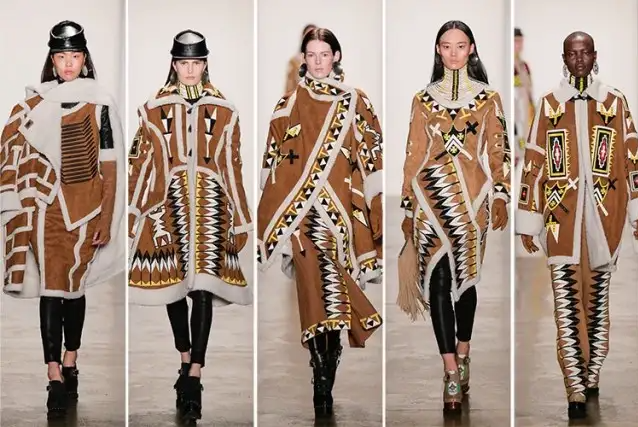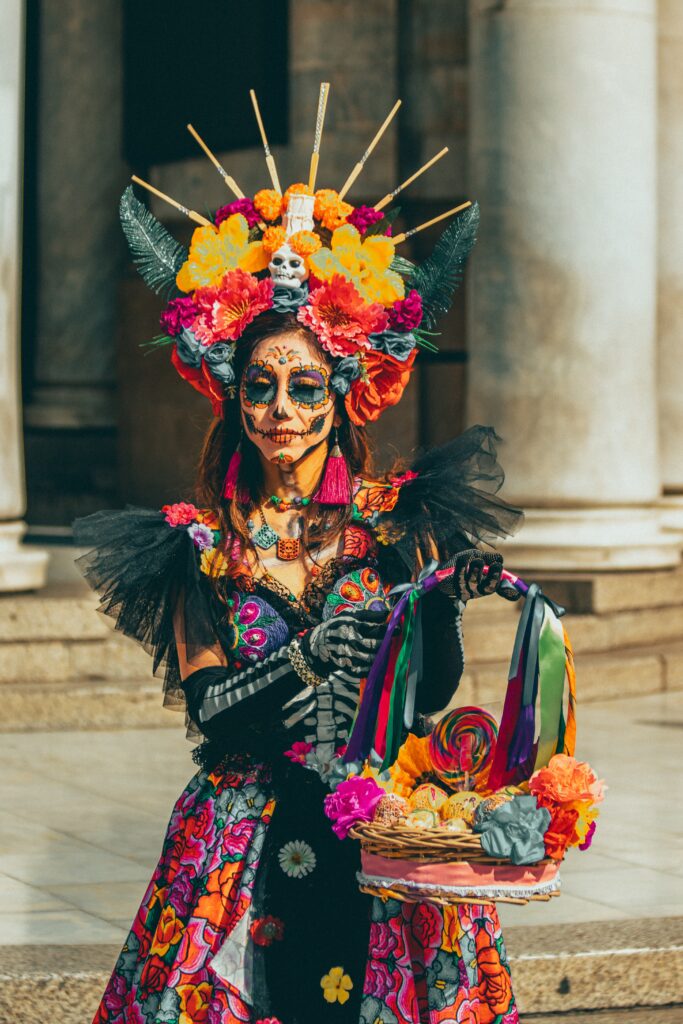
Fashion: The Thin Line Between Appropriation and Appreciation
Worldwide trading introduced the concept of cultural exchange. With the world becoming globalized and interconnected, it raises its own problems. One of the problems brought to the forefront of discourse is cultural appropriation.
Appropriation vs. Appreciation

Cultural appropriation and appreciation are defined differently depending on who you ask. Sometimes actions deemed appropriative by one person in a culture are considered appreciative by another.
The consensus online is that cultural appropriation is when someone outside the culture being used profits off aspects of the culture, separating it from its origin or initial intention. Cultural appropriation also includes when a person, often a public figure, gets inspiration from a cultural practice or style and renames it.
A perfect example is when Kim Kardashian wore a braided hairstyle called Fulani braids deriving from the Fulani or Fula people in West Africa and the Sahel region. However, Kim Kardashian did not give credit to the Fulani people for her hairstyle but deemed them “Bo Derick Braids.” Bo Derek wore braids in a similar pattern in the 1979 film 10. If worn by her nowadays, it would be seen as cultural appropriation.
People who argue that this concept is mere appreciation or inspiration often do not see cultural misappropriation as bad. They are usually excited to see their culture celebrated by other people. However, this argument is only valid if said culture is well-known, so there is no room for cultural appropriation.
On Art Review, Kenan Malik offers insight into this argument. Malik states, “What critics of cultural appropriation want to establish is that certain people have the right to determine who can use such knowledge or forms because at the heart of criticism of cultural appropriation is the relationship between gatekeeping and identity.” Malik seems to argue in this article that cultural appropriation criticism doesn’t benefit anyone, and critics do it not because of feeling their identity stripped from them but because they want to gatekeep their culture.
This point is where the appropriation vs. appreciation discussion stems from; the idea that when someone’s called out for cultural appropriation, it’s due to the offender partaking in a culture they don’t belong to. But the question is then asked: “who makes the rules on who can or can’t take part in a culture?”
The Intersection of Inspiration, Appreciation, and Appropriation in Fashion

Many fashion designers have traveled the world, fallen in love with a particular culture, and based their designs on them. In his 1967 Spring-Summer collection, Yves Saint Laurent dedicated it to Africa. From this inspiration, he made several dresses from various materials, such as golden thread, raffia, straw, and wooden beads.
In addition, Gianfranco Ferré, the well-known Italian designer named Artistic Director of Christian Dior in 1989, traveled to India in 1973. There, Ferré truly fell in love with India and this nation significantly influenced much of his creative output. For the Fall/Winter Season of 1988/1989, he used design cues from Kashmiri Indian shawls to recreate them on sheer organza fabrics made by Indian craftspeople. Although these designers took inspiration from cultures they admired, some may not see this as appreciation.
Inspiration and appropriation have meshed dramatically in recent years, and fashions linked to capitalism continue to grow. Famous brands take cultural styles and set them at a price that people of those cultures have expressed wouldn’t be in the country the design originated from.
Appropriation Often Ignores Historial Context
In 2021, Balenciaga released their Barbes Large East-West Shopper bag. Many people worldwide, especially West Africans like Ghanaians, recognize the bag’s design as an everyday bag they all use and are shocked at the bag priced at $2,000. Ghanaians compared it to a “Ghana Must Go.” According to Stuff, thousands of undocumented immigrants, most Ghanaians, crammed their things into these bags hastily in the 1980s after receiving short notice to depart Nigeria, receiving the name “Ghana Must Go.”
There’s also an issue with brands implementing different cultural influences in their designs while having accusations of discrimination and not including the people of said culture in their brand ad campaigns.
Criticizing cultural appropriation may not do much, but the issue continues to spread when people are unaware of what’s happening. So instead of advising people not to speak up, we should teach them to know what they are advocating for or against and why.
(Article continues after the ad)
Please follow our fantastic site sponsors! They make content like this possible!
The Commodification of Culture

Critics are not so much against cultural exchange but the commodification of their culture. Many times Black people have called out brands for producing offensive imagery. Marc Jacobs had their models wear dreadlocks in their 2019 fashion show. Similarly, in their 2018 Fall Winter Show, Gucci created a mask miming a caricature of African-Americans rooted in racism, known as minstrel shows.
Diversity and proper representation are something the younger young adults of this generation value. But unfortunately, when asking for diversity, the result sometimes does not align with the type of representation a culture desires. Most times, brands are chasing trends to appear inclusive and diverse, reflecting how the brand implements these two things.
If wearing “dreadlocks” was essential to the show’s creative vision, Marc Jacobs could’ve easily employed Black models exclusively to walk the runway. This action further verifies many Black people’s thoughts that their culture is only good when it is not on them. Many fashion trends like streetwear and logomania, which brands like Louis Vuitton have benefited from, were pioneered by Black people but were deemed “urban” or “ghetto” when they participated in the trends.
Recognizing Cultural Appropriation
Usually, the commodification of a culture isn’t addressed until someone from the community speaks up. These companies frequently capitalize on minority cultures. Like in 2019, Alejandra Frausto, Mexico’s minister of culture, accused Carolina Herrera of using embroidery techniques and patterns exclusive to certain Mexican Indigenous groups in the resort 2020 collection.
In a New York Times article Wes Gordon, the creative director, claims he got the idea for the collection while on a trip to Mexico. Still, the collection included items that Alejandra Frausto referred to as coming from the Tenango de Doria neighborhood in Hidalgo, as well as a striped knit shirtdress that she thought looked too much like a serape from Saltillo.
Many of these acts of inspiration directly impact the community, especially if they don’t have a big enough voice to let others know of the wrongs done against their community.
As stated by Conscious Life and Style, Monica Boța-Moisin, founder of the Cultural Intellectual Property Rights Initiative (CIPRI), doesn’t like to use the word cultural appropriation but opts to use cultural misappropriation as it emphasizes the depth of the problem. She defines cultural misappropriation in fashion as “The harmful act of accessing and/or using traditional knowledge or traditional cultural expressions from a people, community, tribe, or group that shares a common cultural identity, values, worldviews, and history. And using them in a different context for commercial purposes without the authorization, acknowledgment, and compensation to the original custodians.”
The Hypocrisy of Misappropriation

Through many fashion brands’ mess-ups, we can see that the main problem with cultural misappropriation is the erasure of the original culture to make it more palatable to a western audience. For example, Marc Jacobs can use models with dreadlocks for a fashion show, but when American actress Zendaya wore them to the 2015 Oscars, Guiliana Rancic commented on Fashion Police that Zendaya looked like she smelled like cannabis and patchouli oil.
Additionally, American states have to implement legislation like the Crown Act to allow Black people to go to work in America without being subjected to prejudice because of their hair.
Women’s Wear Daily featured an article about cultural appropriation in fashion in which Dr. Benedetta Morsiani, a researcher at the University of Westminster in London in the department of Modern Languages and Cultures observations, was included.
“I believe it is especially this need (to represent the marginalized) that encourages people to want to protect the cultural specificities of their racial and ethnic groups,” Morsiani said. “Therefore, people become vocal on matters of cultural appropriation to maintain and protect their cultural identity. People will protect anything they identify with if it means preserving it.”
How to Prevent Cultural Misappropriation

Some cultural objects or garb should never be worn or used by somebody who does not identify with that culture. Some cultural items and styles hold deep significance and meanings to said culture. This means that if not understood, you could offend the people within that culture by using it. Also, certain cultural clothing items have proper ways to wear them. The Ao Dai, a traditional Vietnamese dress, is one of these items.
There are many instances where people and celebrities altered this traditional dress to match a more modern way of dressing. This resulted in many people sexualizing the cultural garment by not wearing pants with it as the people of the culture do.
The best way to prevent cultural misappropriation is to educate yourself on the clothes you’re wearing. If they look similar or too close to a cultural garment or item, you shouldn’t buy them. That is unless you know where it is made and by whom.
Consumers purchasing items inspired by other cultures and made by the people of the culture to support them is fine. Buying knock-offs of the culture is where it becomes misappropriation. Just make sure to wear the outfit or use the item as intended to honor the original culture it’s from.
Lastly, you can appreciate a culture without participating in it through dress or practice. Instead, show appreciation for a particular culture by learning about it. For instance, some outfits are strictly for ceremonial purposes only, so wearing them for other purposes becomes misappropriation.
Showing Respect For Cultures Through Educating Yourself About Them
Not all forms of cultural exchange are bad. That’s why learning all the information you want to know about a culture is so important. And it’s best done by learning from the source. This can be accomplished by reading works or listening to information shared by people native to that particular culture.
In a previously published article, the topic of appropriation of Indigenous cultural practices was discussed after interviewing a Navajo woman. In that article, we highlighted the misappropriation related to sage burning – also known as smudging. You might be surprised to learn that purchasing sage counteracts the intent of the practice. Rather, sage for burning is meant to be harvested by the user directly, traded, or gifted. Meaning that buying smudging sage at Walmart won’t burn away bad energy in your home – it might do the opposite.
If you like an outfit, style, practice, symbolism, or other facets of a culture, learn all you can about it. Make sure you’re showing appreciation and respect for that culture instead of disrespect or misappropriation. And, try to be aware of or identify ways in which the item might have been appropriated. This can either be by the producer of the item or how you are using it. Finally, if you discover you’re misappropriating something from another culture, explore ways to avoid it in the future.
And remember, do not dress up as another person’s culture, especially for Halloween. It’s not endearing; it’s insulting. Other people’s cultures are not a costume.
Thank you to our supporters and sponsors!
As always, we want to thank our Patreon’ Cultivator’ supporters and sponsors who help make content like this possible.
The following Patron(s) supported the production of this article:
Crystal Gropp
The following sponsors supported the production of this article:
Viva La Compost & LunaKai Lash



